QuestionI have a 10 gallon tank with goldfish, guppies, African dwarf frogs and tadpoles (I am a teacher). The tank has been set up for about 3 weeks. I do not know the pH, ammonia ir nitrate levels. I do not have an indicator. My goldfish developed bumps over the weekend. They are whitish bumps. What are they and how do I treat it? Also some of my elodea plants are turning yellow. I have a light source. What could this be from?
AnswerHi Margaret;
I apologize for not getting to you sooner. I hope it isn't too late for your poor fish. The AllExperts system is having a problem and not getting my questions to me. Yours just appeared today as if it was new. So sorry.
There are just way too many fish and frogs for a new tank to get established safely. The animals you have in there now are too much even if the tank were fully broken in. Make a 50% water change right away. Do another one every day for the next 4 more days. This will reduce the toxins that are making the fish sick without shocking them too much.
The next thing you will have to do is make a decision on which ones you want to keep. A ten gallon tank can hold 2 goldfish and no other fish for several months, but will outgrow it. Or, it can hold 4 guppies with some room for the babies as they come along. Or, 5 to 10 frogs and tadpoles depending on the size. Bottom line is that a 10 gallon tank can keep no more than 10 inches of small varieties of adult fish.
Goldfish get at least 8 inches long in their bodies alone, not counting fins. Their thick body mass makes them exempt from the 10 inch per gallon rule. They just need more room than that. Imagine a 10 inch fish in a 10 gallon tank! Yikes! They will also eat the guppies and frogs as they get big enough to get them in their mouths.
The high levels of waste toxins that have built up are burning the plants. That's why they are yellowing. Remove the bad parts so they don't pollute the tank further.
The white spots on the goldfish could also be a parasite called "ick". It is common in stressed fish. The fish store will have a remedy for it but it may harm your frogs and tadpoles. They are pretty sensitive to chemicals.
Here is my article on new tanks to help you understand more about what has been happening in there;
**********
New Tank Syndrome or Break-in Period
So you have a new tank and you filled it up, put the filter together, mounted the heater into place and turned on the lights. You have all the plants and decorations where you want them....
You are ready for fish.
But, your filter is not ready for a full tank of fish yet.
The filter is running and moving the water and cleaning out crud, right? Of course!
But a very important part of your filter is the part you can't see. An aquarium filter removes the larger visible stuff, but it also must remove the dissolved fish waste that turns into ammonia in the water. To do this, special bacteria must grow in the filter system and on the particles of gravel in the bottom of your tank. This process occurs even on a limited scale in little fish bowls that have no filter in them.
This is "New-Tank Syndrome" or the "Break-in Period". The entire process takes 6 to 8 weeks to complete because these "nitrifying" bacteria grow quite slowly.
Start off with only one or two hardy fish (no more than 2 total inches of fish) for every ten gallons of water and don't add more until the 6 to 8 weeks has gone by. Hard to be patient, but it is worth it to keep your fish alive and healthy. As a matter of fact, the bacteria cannot develop without fish in the tank. You can let that tank sit forever without fish in it, but as soon as the first fish goes in the process begins. Avoid changing the filter pads during break-in. This removes the bacterial colonies that are essential to a balanced aquarium. You can rinse the filter pad out in a container of aquarium water. This will preserve most of the bacteria colonies while still allowing your filter to flow freely. Even using bacteria additives and water conditioners when you first set up the tank will not make a tank begin the cycle by itself. If there are no fish to provide food (fish waste) for the bacteria, the beneficial bacteria cultures will die and you will have to start the colonies all over again once fish are added to the tank. Once the tank has completed the initial cycle, you can change the filter pads every 4 weeks or so. But for now, just rinse them.
Feed your new fish VERY lightly. Any excess food will cause additional waste your system cannot afford to have right now. If you see food floating around or lying on the plants and gravel after five minutes, too much food is going into the tank. Cut back a little each time you feed until it is ALL gone 5 minutes after you feed them. Feed them once a day.
During this "break-in period" your tank will become cloudy and milky looking. You may have to tolerate this for the entire break-in period but it is only temporary. Changing 25% of the water three times a week until the break-in period is over helps a great deal. Changing water reduces the ammonia and nitrites that rise while the bacteria continues to multiply. If ammonia and/or nitrites become too high, your fish will become stressed and possibly die. Use a good water conditioner when you replace the water and make sure it is the right temperature to avoid shocking your fish.
When the break-in is over after 6 to 8 weeks and there are no nitrites or ammonia present in the water you can slowly add more fish. Add one or two every week until you reach the desired population. This allows the bacteria to adjust to the new population every time before adding more. Monitor the nitrites and ammonia to be sure they don't come up. If they do, make a 25% water change and check them again. Don't add the next fish until the levels are down again.
The safe maximum population for any size tank is one inch of adult fish for every gallon of water in the tank. Do some research to be sure of the fish you are interested in. Even though they are small when you buy them, you have to base your population calculations on full-sized adult fish. Many hobbyists have up to two inches per gallon but this can be risky. If a water quality issue arises or a disease occurs it will spread fast and furious in an over-populated tank. In any case, 25% water changes every week to two weeks are absolutely essential for the health of your fish.
Following these guidelines will help you get your new tank on the right track.
**********
At Your Service;
Chris Robbins
Come on over and join us on the freshwater fish forum at About.com to get even more information too;
http://freshaquarium.about.com/od/questionsanswers/a/naavigateforum.htm

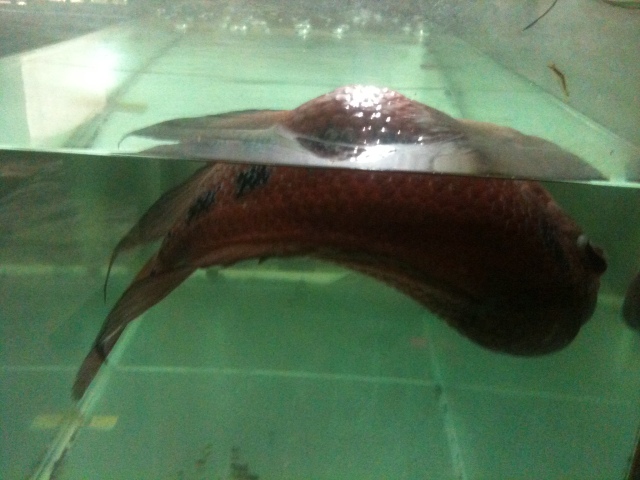 Flowerhorn bloating stomach
Question
Flowerhorn Bloated Sto
It has been 2-3
Flowerhorn bloating stomach
Question
Flowerhorn Bloated Sto
It has been 2-3
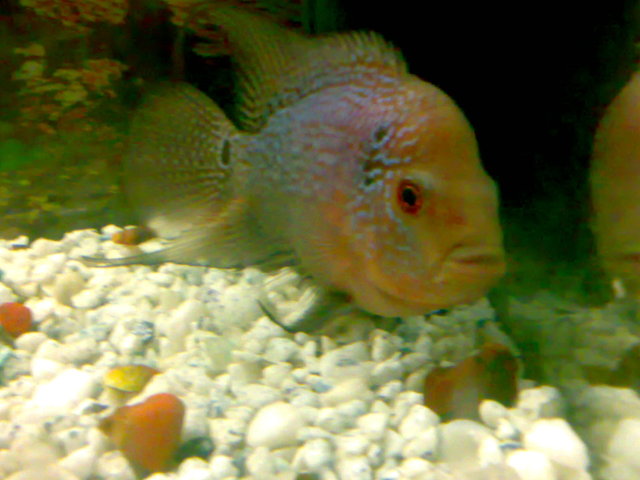 flower horn
QuestionQUESTION: how to know flowerhorn male or female
flower horn
QuestionQUESTION: how to know flowerhorn male or female
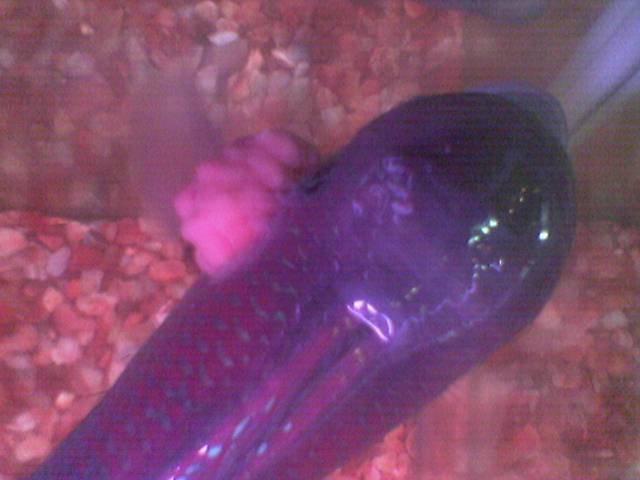 flower horn fungus
Question
flower horn fungus
Hello there,
I have a flowe
flower horn fungus
Question
flower horn fungus
Hello there,
I have a flowe
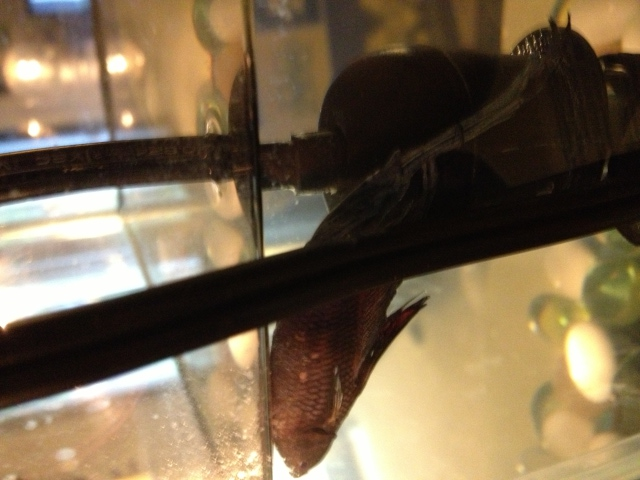 Sick betta fish
Question
Betta image 1 Betta image 2
I pur
Sick betta fish
Question
Betta image 1 Betta image 2
I pur
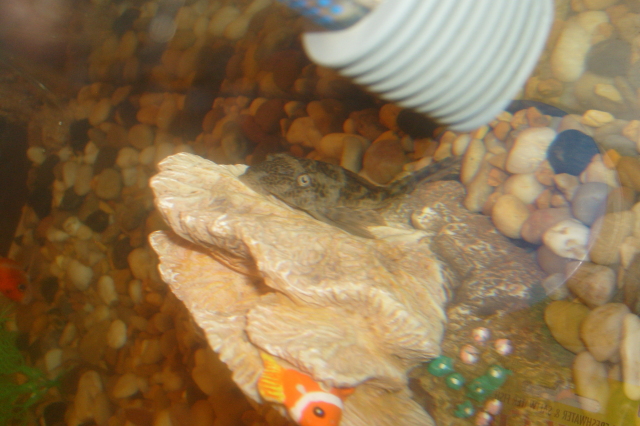 My Common Pleco
Question
Pleco
I am a beginner who has made a HU
My Common Pleco
Question
Pleco
I am a beginner who has made a HU